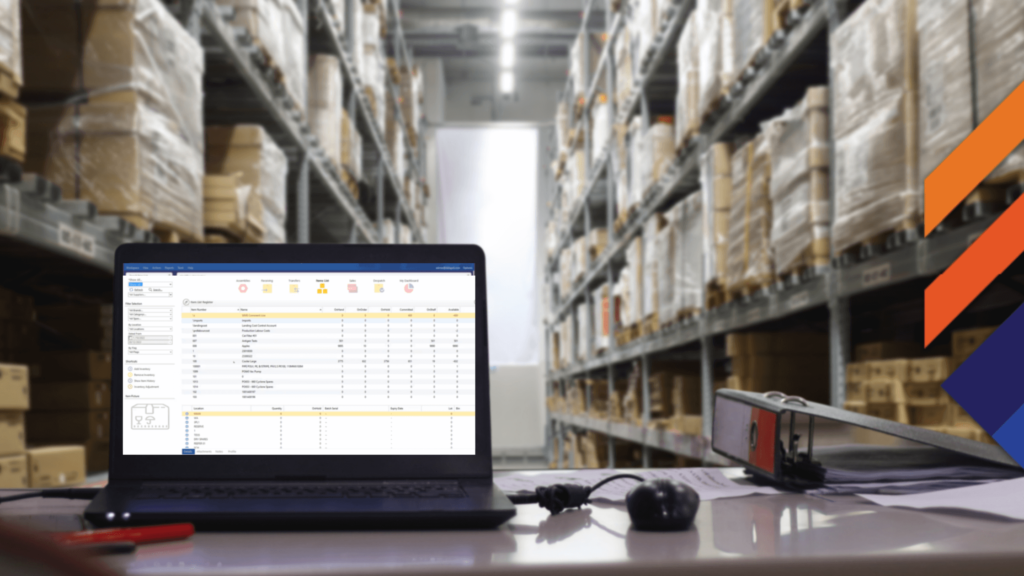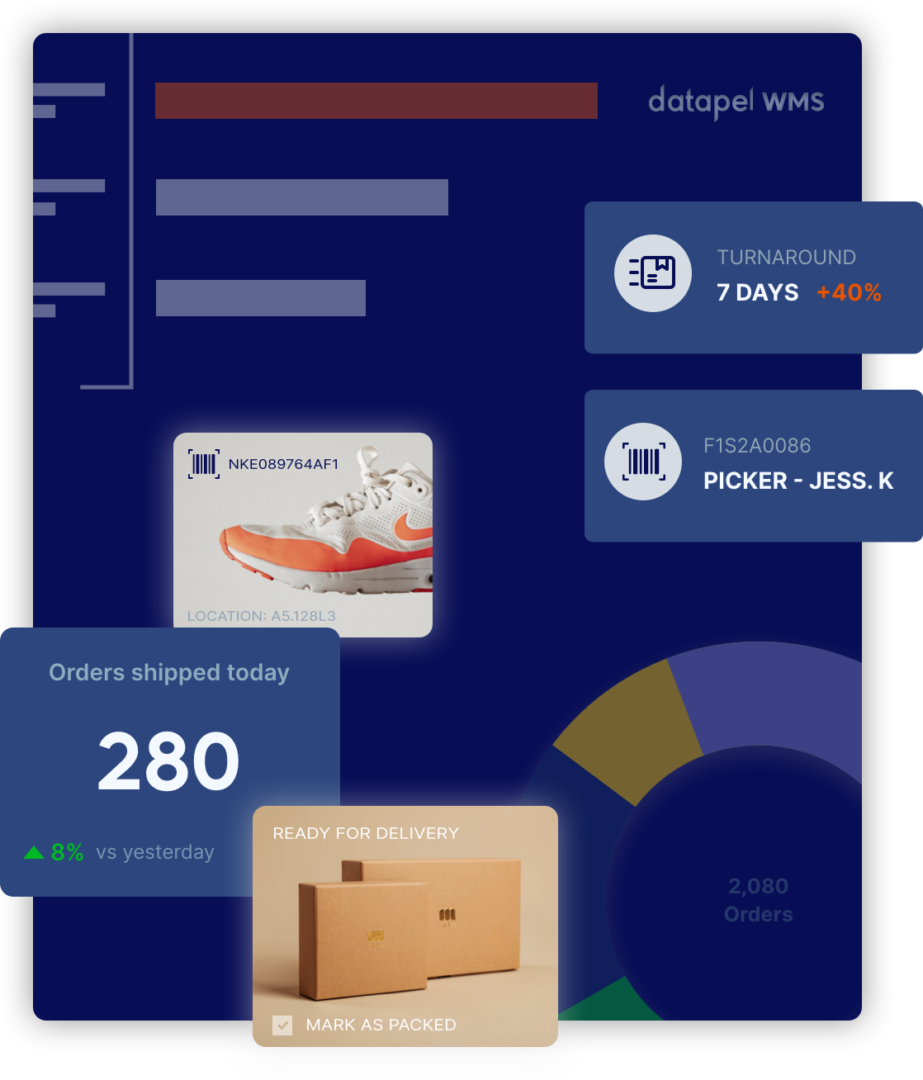A Comprehensive Guide to Warehouse Management
Contents
Warehouse management is a critical component of supply chain management. It involves managing the movement of goods through your warehouse to ensure they are delivered on time and in good condition. Like any other facet of a business, how well you manage your warehouse directly impacts the business’s overall success.
It’s is a never-ending process that strives for continuous improvement. Each time you improve in one area, it sets a new baseline for future improvement. For example, managing your inventory levels more efficiently can help reduce costs by decreasing the amount of wasted space in your warehouse.
Warehouse Tools and Strategies
There are many different tools and strategies that you can use to improve your warehouse management processes. Some of these include using Warehouse Management Systems(WMS), advanced picking technology, or developing a complex inventory management system to ensure that you always have the right products.
Whether you are just starting in warehouse management or looking for new ways to improve your processes, staying up-to-date on the latest best practices and industry trends is essential. Doing so can keep your own warehouse management solution running smoothly and efficiently while also helping your business grow.
What is Warehouse Management?
The warehouse is where all the magic happens! Meaning, if you need something, the warehouse magically pulls the item out of a hat. Ah, if only this were true. In a perfect world, warehouses don’t exist, and when people need something, it’s just delivered to their doorstep.
While this might seem ideal, effective warehouse management is crucial to any business’s supply chain operations.
Because customer demand is unknown, goods must be constantly supplied and replenished. The network of suppliers, warehouses, demand centres, and transportation partners that make up your supply chain management must all work together perfectly to ensure that the demand for goods is consistently met.
This requires careful management of your warehouse space, processes, and inventory levels to ensure that you always have the right products and quantities ready for delivery. The rise of eCommerce has exacerbated these challenges, as demand is increasingly unpredictable and customers expect faster and more flexible deliveries.
Optimise performance
To optimise warehouse performance, there are many different strategies and tools that you can use. Some of these include a WMS, advanced picking technologies, or inventory management software to ensure that your warehouse is always running smoothly.
Warehouse management includes inbound and outbound logistics, timely equipment maintenance and upgrades, tracking inventory, stock level and inventory control, and monitoring of the storage facility. Poor management of a warehouse leads to increased costs, delays in deliveries, and declines in customer satisfaction.
To avoid these problems, it is important to proactively monitor your warehouse operations and keep up with the industry’s latest best practices and trends.
Top ten items to measure in your warehouse
There is no shortage of items to measure within the walls of a warehouse and let’s not forget the yard space. Here are ten of the most common things to measure:
1. Inventory Levels
Effective inventory management is the cornerstone of warehouse operations. Monitoring inventory levels helps strike a delicate balance between having enough stock to meet customer demands and avoiding excessive carrying costs and stockouts.
2. Shipping and Receiving
Tracking goods as they move in and out of your warehouse ensures that products are flowing smoothly through your supply chain. Accurate shipping and receiving data enable timely order fulfilment, minimising delays and ensuring customer satisfaction.
3. Equipment Maintenance
Well-maintained warehouse equipment guarantees operational efficiency. Regular maintenance and tracking of equipment performance help to prevent costly downtime and disruptions in fulfilling customer orders.
4. Organisation
A well-organised warehouse enhances productivity and order accuracy. Implementing systematic storage and labelling systems based on product attributes empowers your warehouse team to quickly locate and retrieve items, reducing processing time.
5. Employee Training
Investing in comprehensive employee training is essential for a capable and confident workforce. Proper training in warehouse operations, equipment handling, and software usage enhances employee efficiency, reduces errors, and fosters a safer working environment.
6. Throughput
Monitoring the speed and efficiency of warehouse processes allows for continuous improvement. Analysing throughput data helps identify bottlenecks, optimise workflows, and enhance overall productivity.
7. Inventory Accuracy
Accurate inventory tracking ensures that your warehouse consistently stocks the right products in the right quantities. Precise inventory data supports demand forecasting, reduces overstocking, and prevents shortages.
8. Safety
Prioritising warehouse safety safeguards both your employees and your bottom line. Promoting a safety culture and implementing safety protocols minimise accidents, reducing medical costs, worker downtime, and potential legal liabilities.
9. Order Fulfilment Accuracy
Timely and accurate order fulfilment is paramount to customer satisfaction. Measuring order fulfilment accuracy helps maintain a positive customer experience, leading to repeat business and brand loyalty.
10. Security
Protecting your inventory from theft and damage is vital for maintaining profitability. Robust security measures, including surveillance systems, access controls, and both inventory storage and tracking, contribute to safeguarding your assets.
Focusing on these areas of warehouse management ensures that your warehouse is always running efficiently and effectively.
Whether you are looking to improve operations, reduce costs, or increase customer satisfaction, many tools and strategies are available to help you achieve your goals. One of the most valuable tools to manage your warehouse is a WMS.
What is a Warehouse Management System (WMS)?
A warehouse management system or WMS is magic, especially if you rely on antiquated manual systems or spreadsheets to manage your warehouse operations.
A WMS is a software solution that helps you effectively and efficiently manage all aspects of your warehouse, including inventory levels, shipping and receiving, equipment maintenance, organisation methods, employee training, throughput rates, order fulfilment accuracy, and much more.
Reporting and dashboards are features of a WMS, allowing you to easily track and analyse all aspects of your warehouse operations in real-time. Additionally, WMS solutions typically offer integrations with more advanced inventory management software features, such as RFID tracking, barcode scanning capabilities, automated picking systems, and more.
Overall, a well-built WMS empowers warehouse managers to optimise operations. Historically, warehouse management systems weren’t affordable for SMBs, forcing them to utilise manual processes, excel, or manage the warehouse with out-of-the-box ERPs that weren’t designed for efficient warehouse operations.
Even before supply chain disruptions, the value of a WMS has been clear. Whether you’re looking to improve productivity, reduce costs, or increase customer satisfaction, a WMS can help you find warehouse management software solutions and stay ahead of the competition.
Principles of Warehouse Management
Understanding warehouse management tools andoperations principles helps you focus on optimising your warehouse operation.
This includes the following: Get the goal right. In most instances warehouse operations have a clear objective in mind. Tell me some specific customer requirements? Are there any special storage options? Warehouse operations are meant to use warehouses and equipment efficiently.
Controlling everything in its entirety. Warehouse management involves managing a complex process which combines people, equipment, ordering and stock. Store.
Warehouse Management Fulfilment Strategies
Choosing fulfilment strategies that meet business size, volume or order type will improve shipping efficiency, reduce wasted and improve customer satisfaction. Applying a pick strategy that matches the order types that your business gets helps keep your workflow efficient.
For example: Technology can also help to support warehouse fulfilment strategies as well. Mobile device displays that display the location of a particular package, serial number and lot number can increase pickability. The software provides safe and cost-effective packing based on the size of products so every piece will arrive on its own.
Storage Operations
Store operations using storage systems in storage buildings can maintain the highest levels of stock and inventory turnover ensure optimum storage space utilisation, as well as quick, precise retrieval of products.
Key tasks include regular cycle count and stock inventory accuracy strategy transfer for optimising space shipments, inventory and storage. Storage operation is crucial to warehouse efficiency enabling safe access and ready delivery and thus reducing stock-outs or overstock.
Outbound Operations
Inbound operations in storage are focused on the accurate delivery of products to the end customer or to the following phase of the supply chain. In combination with storage and internal processes, outbound operations provide customers with immediate satisfaction.
Core activities involve picking products on customer orders securely and efficiently, packaging these goods, sorted by their end destination, and ultimately delivering them from warehouses. The outgoing operation is crucial in delivering tangible results to customers by delivering timely delivery to customers promptly.
Warehouse Optimisation
In order to optimise warehouse operations, each component has to be fine tuned. Often when the recipient gets a package an employer labels their product using an RFID code or a barcode that makes it easier to locate the product when the shipment arrives or is recalled.
During the putting-away, the warehouse will store items at minimum capacity and optimise its capacity. Best practices to optimise warehouses include the placement of popular products into accessible storage locations and the removal of objects that may easily mistakenly exist.
Benefits of a Warehouse Management System
Opting for a Cloud-based Warehouse Management System comes with several benefits, all of which subsequently lead to business productivity. Some of these benefits include:
Improved inventory levels and accuracy
A WMS provides real-time insights into inventory levels, allowing you to easily identify and address concerns or discrepancies. Additionally, the software can help you track product movements within your warehouse, ensuring that all items are shipped and received as they should be.
Increased efficiency and productivity
A WMS simplifies warehouse operations such as data entry, order fulfilment, and picking and packing, allowing you to improve the efficiency of your warehouse workforce.
Reduced costs
A WMS can help you reduce many operational costs associated with printing, picking, and shipping.
For example, barcode scanning can help optimise inventory movements, reduce errors, and lower labour costs. Additionally, using a WMS to track performance metrics such as order fulfilment rates allows you to identify areas for improvement and make changes accordingly.
Increased customer satisfaction
A WMS can improve customer satisfaction by ensuring that orders are shipped accurately and promptly. Additionally, the software can help you streamline operations, improving your efficiency and reducing the likelihood of errors or delays that could cause customers to become frustrated.
Most of all, a WMS allows your warehouse leadership more time to lead their team. Rather than spending their time on day-to-day operational tasks, they can focus on training new employees, assessing equipment needs, improving processes to reduce costs, and overall strategy implementation.
Next Steps
If you’re looking for a WMS that can help you improve inventory levels and accuracy, increase efficiency and productivity, reduce operating costs further, increase customer satisfaction, empower teams to perform their best, and allow your leaders to lead, look no further than Datapel.
This simple-to-use but powerful WMS provides reporting and dashboarding features that enable you to track and analyse all aspects of your warehouse operations in real time. Contact us today for a free consultation!
FAQ’s
What is basic warehouse management?
Basic warehouse management involves overseeing the operations within a warehouse to ensure efficient storage, handling, and movement of goods. It includes managing inventory levels, optimising warehouse space and processes, and ensuring timely delivery of goods.
What are the 4 basic functions of a warehouse?
The four basic functions of a warehouse are:
- Receiving goods from suppliers.
- Storing goods effectively.
- Picking and packing goods for dispatch.
- Shipping goods to customers.
What does a warehouse manager do?
A warehouse manager oversees the day-to-day operations of a warehouse. They are responsible for inventory management, coordinating the receiving and shipping of goods, ensuring the maintenance of warehouse equipment, optimising warehouse organisation, and managing warehouse staff to ensure operational efficiency.
What is the most important thing in warehouse management?
The most important thing in an effective warehouse management system is maintaining accurate and efficient inventory management. This ensures that the right products are available in the right quantities at the right time, minimising costs and meeting customer demand effectively.
What are the 5 areas of a warehouse?
The five key areas of a warehouse include:
- Receiving area, where goods are received and checked.
- Storage area, where goods are stored until needed.
- Picking area, where goods are picked according to orders.
- Packing area, where goods are packed for shipment.
- Shipping area, where packed goods are dispatched to customers.
What 3 things does a warehouse provide?
A warehouse provides:
- Storage for goods until they are needed.
- A warehouse management system for tracking inventory to ensure goods are adequately stocked.
- Facilities for packing and shipping goods to customers.
What is the first step in warehouse management?
To begin managing a warehouse, it’s important to evaluate your inventory requirements and the available warehouse capacity. This entails implementing a warehouse management system that can monitor and manage inventory levels, allocate space, and regulate the movement of materials throughout the warehouse.
How do you manage inventory in a warehouse?
To effectively handle inventory in a warehouse, you can deploy a Warehouse Management System (WMS) to keep track of stock levels in real-time.
Additionally, using barcode scanners can enhance accuracy. It’s also important to regularly review inventory levels to avoid overstocking or stockouts. Employing inventory management techniques such as FIFO (First In, First Out) can help ensure freshness and reduce waste.
How do you manage warehouse workers?
Managing warehouse workers requires offering in-depth training on warehouse operations, safety procedures, and equipment usage.
Clear communication channels should be established, and performance expectations set with the use of incentive programs to motivate and reward high productivity. Providing regular feedback and opportunities for professional development is also crucial in effectively managing warehouse workers.

In my role, I oversee the development of insightful blogs that delve into the intricacies of warehouse management. Each piece reflects my dedication to empowering businesses through informative content. Through my team’s extensive experience in the industry, we aim to bring clarity to the complexities of WMS, helping businesses make informed decisions.
Join me on a journey through the ever-evolving landscape of warehouse technology as we explore the latest trends, industry insights, and practical tips to streamline your operations. Feel free to connect, and let’s embark on a collaborative exploration of how WMS can redefine your business efficiency.
Cheers to innovation, efficiency, and the exciting world of warehouse management!














